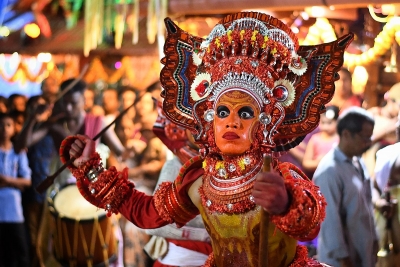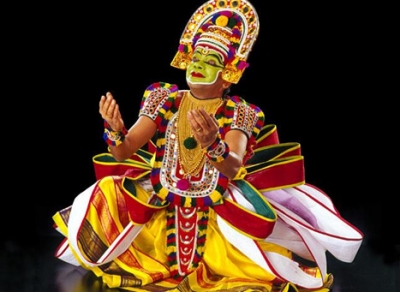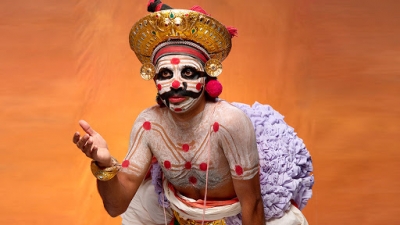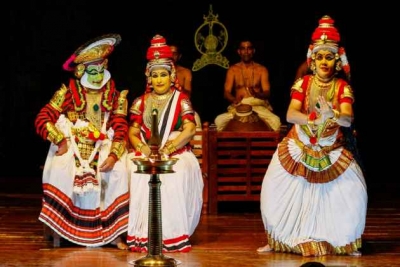What are the lesser known art forms of Theyyam and Puli Kali?

Theyyam is a ritualistic dance form wherein pantheistic deities are summoned to the body of the performer. The performers are generally men and they perform in a kaavu (small rain forest) manifesting varied aspects of nature. The performers are decorated with leaves, garlands, flowers and fruits. The headgear is really big and personifies Chamundi Theyyam who is the goddess invoked. Particularly prevalent in North Malabar, there are several types of Theyyam, and the dance is performed near temples. There are particular communities that follow this custom with strict adherence.
Puli Kali is the play of the leopard or tiger; dancers are attired with masks and are completely made-up like tigers. It is performed by men, women and children during festivals like Onam. Pot-bellied men practically shake their bellies that are painted with the face of the tiger! It has more of recreational value of fun and frolic and is prevalent in many districts of Kerala.
Picture Credit : Google


